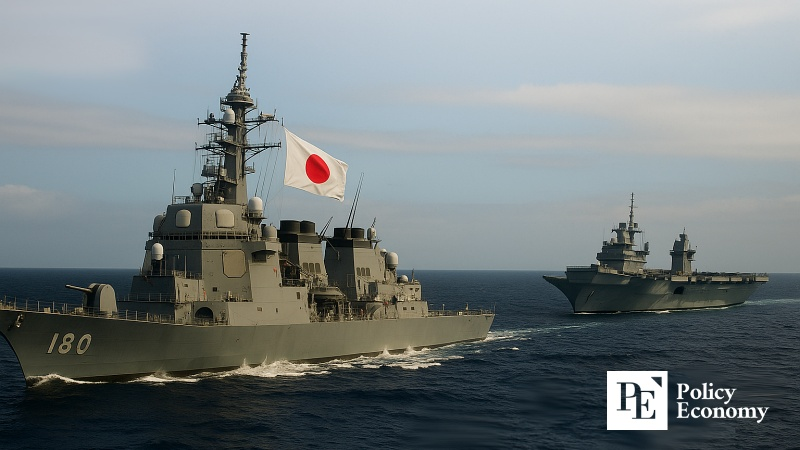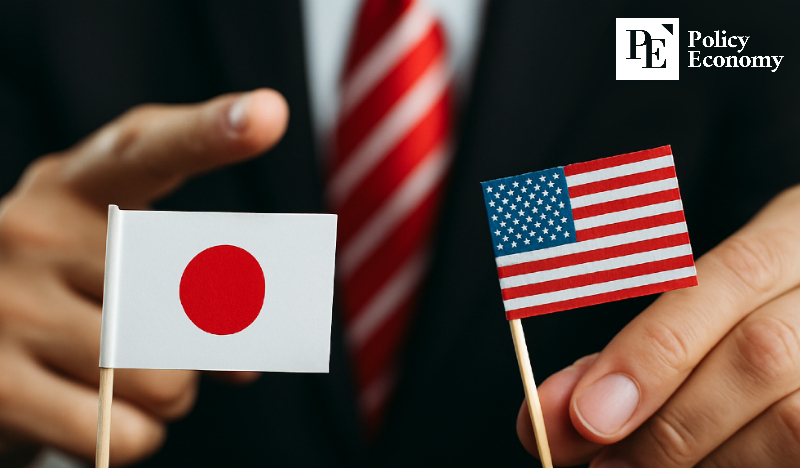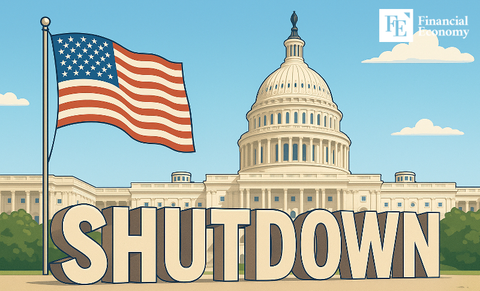Japan Moves to Boost Defense Spending, Eyes Potential 5% of GDP Amid Trump-Style Pressure
Input
Modified
Prospect of Acquiring Offensive Strike Capabilities
U.S. Pressure Fuels East Asia’s Arms Buildup
NATO’s 5% GDP Pledge Seen as a Precedent

The Japanese government is moving to expand its defense budget through an early revision of its security policy documents, signaling a shift in its postwar military posture. The push is tied to legal and institutional changes that could codify Japan’s “counterattack capacity,” a step interpreted as securing the authority for preemptive strikes. Reports indicate that the United States has urged Japan to raise defense spending to 3.5% of its gross domestic product (GDP), with some analysts projecting that figure could climb even higher in the coming years.
Japan on a Path to Expanding Military Power
According to the Sankei Shimbun on the 13th, Tokyo has begun reviewing an early amendment to its core security documents to meet its pledge of raising defense spending to 2% of GDP by fiscal 2027 (April 2027–March 2028). The revisions would target the National Security Strategy and the Defense Buildup Program, with the government aiming for cabinet approval next year. This marks a significant departure for a nation whose postwar constitutional interpretations and policy principles have long constrained military expansion, putting Japan firmly on a trajectory of rearmament.
The two targeted documents are part of Japan’s “three key security papers,” alongside the National Defense Program Guidelines, which were last revised at the end of 2022 for the first time in a decade to add a legal basis for “counterattack capacity”—the ability to strike enemy bases in emergencies. The Defense Buildup Program sets five-year plans for weapons procurement, while the National Security Strategy outlines defense policy objectives over roughly ten years.
Historically, the scale of Japan’s defense spending has largely mirrored U.S. demands. Since the 1970s, Tokyo had maintained defense expenditures at around 1% of GDP. The 2022 revision of the National Security Strategy set, for the first time, a goal of reaching 2% of GDP within five years, though political and public opinion were divided over the timing and scale. But with deepening U.S.-Japan security cooperation and intensifying U.S.-China strategic rivalry, momentum is now building to accelerate that timeline through early revisions.
Legal and institutional reforms accompanying the budget expansion are expected to broaden the operational authority of the Self-Defense Forces (SDF) and the range of weapons they can deploy. Japan is already pursuing long-range missile acquisitions, enhanced satellite reconnaissance, and expanded electronic warfare capabilities. If legislation explicitly codifies “counterattack capacity,” Japan could respond militarily—potentially even preemptively—against perceived threats, a development likely to reshape the security landscape in Asia.

Arms Race Across East Asia Likely Unavoidable
Washington has reportedly proposed that Japan’s defense budget reach 3.5% of GDP. The Financial Times, citing a Japanese government official, reported that the U.S. recently raised its request from 3% to 3.5%. This far exceeds Tokyo’s current 2% target and would result in the largest defense budget in Japan’s postwar history. According to reports, the U.S. pressed this demand during trade talks in June, though Japan has officially denied it. Even so, the issue appears to have emerged as a long-term negotiating point, with behind-the-scenes discussions continuing.
Speculation has intensified after a planned July high-level U.S.-Japan meeting was canceled due to a scheduling change on the Japanese side. In diplomatic circles, this has been viewed as a subtle tug-of-war—Washington calibrating its pressure, Tokyo adjusting its response. For Japan, rapid increases in defense spending risk straining public finances and fueling domestic political and public backlash, making a measured approach necessary. The U.S., however, has maintained that Japan must act quickly and decisively, citing a deteriorating security environment in East Asia. Given the divergence in priorities, both sides will need to find common ground.
This dynamic is expected to spur broader military build-ups across East Asia. China’s and North Korea’s military expansions, coupled with increased activity by Russia’s Pacific Fleet, are already heightening regional insecurity. With Washington pressing not only Japan but also key allies such as South Korea and the Philippines to boost defense spending and modernize forces, Tokyo’s decision could trigger military responses from neighboring states.
From NATO Gains to Asian Pressure
Japan anticipates that U.S. expectations for its defense spending could grow further. The 32 members of the North Atlantic Treaty Organization (NATO) recently agreed to spend 5% of GDP on defense within the next decade, a precedent likely to intensify pressure on Asia. In a joint statement adopted in The Hague this June, NATO leaders committed to allocating 5% of GDP to essential defense needs and security-related spending by 2035—3.5% for direct military expenditures such as weapons procurement and 1.5% for related infrastructure and cybersecurity.
The decision reflects a convergence of concerns over potential Russian aggression and U.S. calls for higher allied defense spending. President Donald Trump, during a February 2024 campaign rally, recalled his first term in office, saying, “When NATO asked if the U.S. would still protect them even if they didn’t pay their share, I told them, ‘Absolutely not.’ They didn’t believe me, so I said I’d even encourage [Russia] to do whatever it wants.” His message was that Europe is no longer a safe haven and that real action—meaning heavier defense burdens—is required to deter Russia.
In Japan, there is a prevailing view that such an approach from President Trump would extend to U.S. allies in Asia as well. Indeed, in June, Pentagon spokesperson Shawn Parnell told a congressional budget hearing, “As NATO works to expand defense spending, our allies worldwide, including in Asia, are adopting new benchmarks for defense outlays. It’s common sense that Asia-Pacific allies should move quickly to match Europe’s pace and levels of defense spending.”





















